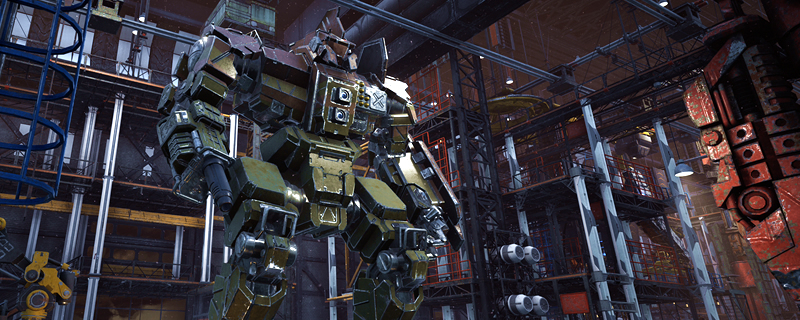Did Nvidia fix DLSS? DLSS 2.0 Analysis with MechWarrior 5: Mercenaries
Conclusion – Has Nvidia ‘fixed’ DLSS?
When Nvidia released its RTX series of graphics cards, the powers of AI performance and hardware-accelerated raytracing were promised to be the driving forces behind the next-generation of gaming.Â
When it was announced DLSS, Deep Learning Super Sampling, had as much, if not more, promise that raytracing. DLSS pledged to deliver increased performance in supported games and similar, or higher, levels of image quality. Â
 Â
The problem with DLSS was that early implementations of the technology failed to deliver on Nvidia’s promises. The first games with DLSS were often blurrier than native resolution images, and graphical artefacts were commonplace on some titles. DLSS 2.0 aims to change this.Â
DLSS 2.0 marks a new beginning for AI-enhanced gaming, promising to deliver higher framerates, minimal or no loss in image quality and the potential to offer gamers higher better visuals in some titles. In short, DLSS 2.0 provides what DLSS was always supposed to deliver.Â
Â
In MechWarrior 5: Mercenaries, DLSS 2.0 can grant gamers sharper visuals than the game’s native resolution presentation, even when DLSS is set to its Performance mode.Â
With DLSS 2.0, Nvidia can offer gamers higher framerates and increases to the sharpness of PC games. That’s a huge win, right? Yes, but the changes delivered by DLSS aren’t always positive. In page 2 of this analysis, you should be able to see that some areas of our DLSS screenshots are more grainy than their native resolution counterparts. While these downsides can be challenging to spot in most instances and greatly diminished with DLSS’ higher quality Balanced and Quality settings, they are still downsides and worthy of note.Â
The main benefit of DLSS 2.0 is its ability to provide gamers with increased performance levels, a factor that makes the technique’s minor downsides more than worthwhile. With an RTX 2060, performance levels that are functionally identical to an RTX 2080 Ti are possible with DLSS at its Performance setting. That’s incredible.Â
Graphically, DLSS 2.0 can provide graphical enhancements in some areas and minor downgrades in others. These changes balance out, making the technology’s enhanced framerates more than worthwhile. Some will see this as a free performance upgrade, making DLSS 2.0 a critical technology for Nvidia.Â
If you though DLSS was a joke, DLSS 2.0 should change your mind. In MechWarrior 5, Nvidia has delivered increased sharpness, higher framerates and downsides that are incredibly minor. DLSS blur is gone, but the performance advantage has remained. The question is no longer “Can Nvidia Fix DLSS?” it is “How will AMD/Intel respond to DLSS?”.Â
As screen resolutions continue to increase, AI image enhancement will become increasingly important. 4K gaming is a challenge now, but what about 5K, 8K or 16K? Technologies like DLSS will be critical for achieving these higher resolutions without the insane hardware costs of native resolution gaming.  Â
Nvidia has transformed DLSS into the game-changing technology that it promised with the launch of its RTX series, and things will only get better with frequent algorithm updates and other adjustments. We can’t wait to see DLSS implemented into more games, and that’s not something that we would have said before DLSS 2.0. Congratulations Nvidia, your turned things around. Â
You can join the discussion on Nvidia’s DLSS 2.0 technology in MechWarrior 5: Mercenaries on the OC3D Forums.Â



